Check out ‘The Changing Room’ – order our first poetry book
Worldwide Roar is now BAREFOOT MAN! Learn more
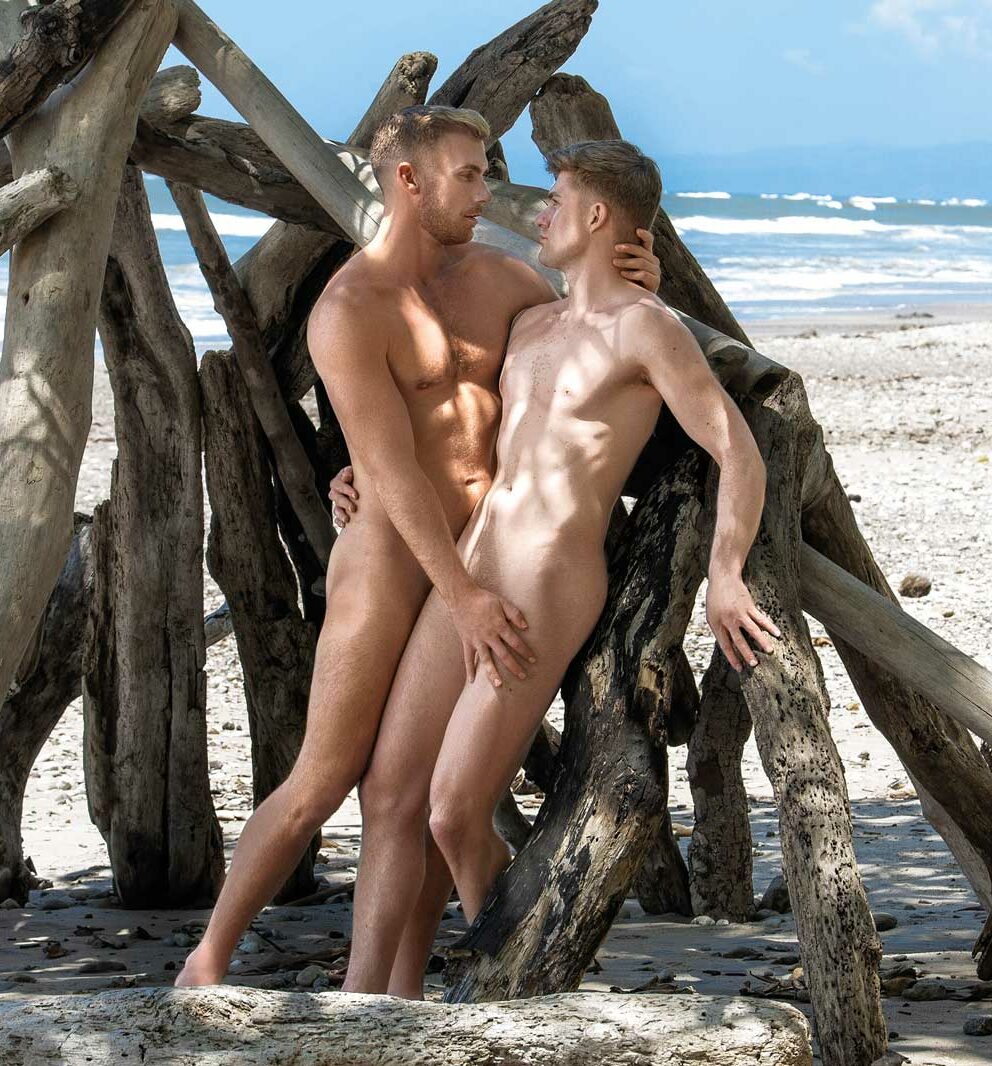
Stay up to date with our latest news, competitions and offers. We look forward to staying in touch.
When we began our project as the Warwick Rowers calendar back in 2009, the world and the internet were both very different places.
The world was still not ready to believe that a group of handsome, heterosexual young rowers at a prestigious English university would undress in front of the world to promote LGBTQI+ rights, and specifically to make queer men feel more welcome in sport.
We proved the world wrong on that score, but we gradually learned that we had got our own learning to do.
The growing awareness of inequality between men and women that came from the #metoo movement showed us that looking at men’s bodies had relevance beyond just men. Black Lives Matter and the growing concerns about the unrealistic body standards being promoted on social media showed us that, despite our best intentions, we had to be more mindful to avoid being part of the problem.
The increasing focus of online power in the hands of a few companies based largely in Silicon Valley showed us that our nudity was already part of the problem. These organisations, particularly Alphabet and Meta, could not understand our perspective on nudity as a force for social change rather than as a purely profit-driven tool for commercial exploitation. That was, after all, their own key motivation and we have been impacted over many years by the financial and cultural agendas of these massive corporations.
We started life in a digital world that was dominated by individuals with blogs and a passion to share information, and we have watched as that has changed. The predominant business model of the internet today is geared more towards consumerism than enlightenment, showcasing a fundamental misalignment of intent and execution in digital spaces.
For us, Wikipedia is one of the remaining examples of an ethos that seemed to prevail when our project began 15 years ago. Wikipedia reflects the potential for technology to foster knowledge and empowerment and remains free to do so, unfettered by the vested interests of Big Tech and its big money backers.
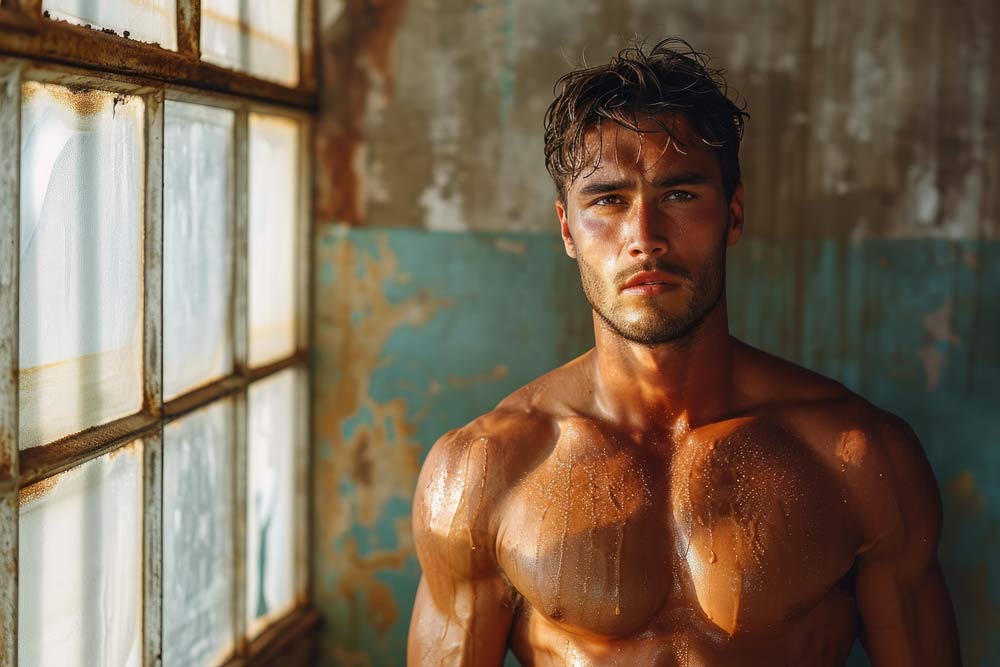
The Barefoot Initiative: A Vision for Democratic AI
We aim to learn from Wikipedia and its model of independence. The Barefoot Way envisions an AI-driven future where technology serves as a catalyst for true democratic engagement, much like Wikipedia has for knowledge sharing. In this future, AI could enable a real-time, global conversation reflecting the collective human will—an unprecedented form of democracy previously unachievable due to technological constraints.
However, this optimistic scenario is not guaranteed. Without a commitment to inclusivity and public interest, AI could become just another tool for concentrated power, reducing individuals to mere tenants in their digitally mediated lives, their thoughts and experiences monetized and managed by a select few.
A Crossroads of Ideologies
The introduction of AI into this complex landscape presents a critical juncture. It offers a path towards a renewed dialogue between contrasting ideologies like capitalism and socialism, reminiscent of post-1945 discussions. It poses an opportunity to redefine societal constructs and power dynamics through enhanced connectivity and shared understanding.
AI stands at the crossroads of being the harbinger of new dialogues or the terminator of meaningful conversation. It is imperative that AI development be guided by a collective intentionality, reflecting a broad spectrum of human experiences and ethical considerations to avoid replicating past mistakes of exclusion and bias.

Conclusion: Charting the Future Together
As we stand on the brink of potentially paving paradise to put up a digital parking lot, the choices we make today will determine the legacy of AI for generations to come.
We believe it is essential to foster an open-source approach to AI development—akin to the Barefoot Way—where technology reflects the diversity and richness of human experience, supporting not just economic but holistic societal progress.
Through Barefoot Man and a broader Barefoot model to come, we aim to ensure that AI serves as a tool for true human advancement, preserving individual freedoms and promoting collective enlightenment.
Angus Malcolm on his journey from writing to photography – and back to words
When I first picked up a camera in 2008, it was because I was getting frustrated with words. I had been living from writing words in one way or another for most of my adult life, so perhaps I just needed a change.
I started out typing other people’s words, having talked my way into a job as a word processor operator. This job is no longer a thing. But it was a big deal at a time when most people in offices did not know how to type and had no idea how to use a computer.
So I was paid to sit and type other people’s words although, as one of my podcast guests who worked with me at that time said in an episode yet to be broadcast, I never just typed other people’s words – I always rewrote them. Sometimes it got me fired, sometimes it got me promoted and eventually it got me a career.
An incredible woman who took me under her wing and remains one of my greatest friends today led into the UK’s response to HIV where I ended up working in HIV health promotion. My job was to look at how we could use words and messages to support men who needed to adapt to a life-threatening change of circumstances.
It was a very traumatic time for the men that I encountered or whose lives I touched – sometimes literally, as a volunteer massage therapist on the AIDS ward of a major London teaching hospital.
There came a point where I didn’t want to think about death anymore. Fortunately, new therapies meant that contracting HIV was on its way to becoming a chronic, treatable condition. I decided I wanted to write about other things.
I went to work at the BBC where I encountered another incredible woman who became my boss and remains one of my greatest friends today. She encouraged me as a writer and enabled me to think in the visual language of a script writer instead of the descriptive language of prose.
As I moved on from the BBC to other TV work and then eventually to photography and the Warwick Rowers project, my friend admired my transition from working with words to working with image, but I think she always felt that there were some things I still needed to put down in writing.
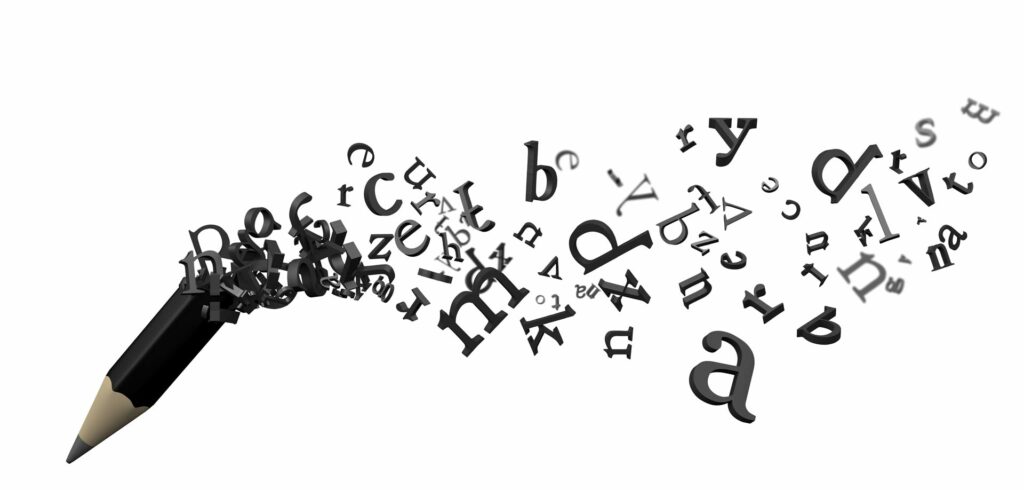
Just after lockdown, we were sitting in Blacks, our favourite hangout in London’s Soho – and the setting for some of the most historic moments at WR and Sport Allies (after many years in the background, some of you may remember it eventually featured in our 2022 calendar and several issues of ROAR Portfolio).
My friend asked me if I ever missed being a writer. By way of answer, I read her a poem. She loved it. She could see why I had loved it, too, and asked who had written it. She did not believe me I said that it was one of my own, but once I had persuaded her it really was, she demanded that I keep writing more poems, even if it was just for her. So I have. How could I not? I’m very susceptible to flattery and have been very grateful for my friend’s guidance and support ever since.
I now have enough poems to publish a book, or launch a substack, or give live performances. I may well try to do all of those things, but I want to start sharing these poems with you first.
You are the people who came with me on an extraordinary journey. You have appreciated my work as a photographer, and I hope that some of the experiences and perspectives that I will be sharing in my writing will also resonate with you.
I still plan to continue with my work as a visual artist – some of it will be photography, film, and my on-screen life as stage mother to the guys who step in front of my camera. However, what I see when I look at men and at the changing world around us can be too much for me to explain in images.
Sometimes I need to use my words. I hope you will enjoy them.
At Barefoot Man, we focus on supporting men of all ages to revisit and perhaps unlearn the rules they were taught as boys. But what about the boys and young men who are still figuring out the rules that they will live by? Educators who are at the coalface of shaping future masculinity share their thoughts.
Mike Nicholson runs workshops for teenage boys on how to navigate the challenges of becoming men. When he discusses feminism, he notices a tangible discomfort among his audience. These kids are not keen on feminism as an idea.
Despite initial resistance, Nicholson, who advocates for boys’ and young men’s wellbeing through a programme called Progressive Masculinity, manages to sway many of the boys by clarifying that feminism advocates for women’s equal rights and opportunities.
But where does the problem come from? Nicholson observes that popular misconceptions significantly contribute to the boys’ initial apprehension towards feminism. He is particularly concerned about the resurgence of traditional, dominance-oriented views of masculinity, popularized by figures like Andrew Tate, who is known for his controversial and misogynistic perspectives.
Recent research by Ipsos for King’s College London and the Global Institute for Women’s Leadership reveals a surprising trend: young men aged 16-29 are more critical of feminism compared to older men, with a notable segment showing support for Tate.
Prof Bobby Duffy from Ipsos describes this as a unique generational shift. Most of us have grown up with the idea that younger groups are generally more progressive than the preceding generation, even if they become less progressive with age. This research suggests that we can no longer rely on that trend. What does that mean for the future?
Anna, a former secondary school teacher, has witnessed a decline in feminist attitudes among young men, paralleled by an increase in problematic behaviours like up-skirting and slut-shaming. Michael Conroy, founder of Men at Work, has similarly noted a deterioration in young men’s attitudes towards women that seems to correlate with the widespread use of smartphones.
Conroy attributes part of this trend to Tate’s ability to exploit the vulnerabilities and confusions of young men, especially in an era where pornography is easily accessible. Tate, who currently faces serious legal charges in Romania, including human trafficking and rape, produces videos that often blend hard work ethics with misogynistic views towards women. They are very popular with young men.
Daniel Guinness of Beyond Equality works with boys and men in various settings, focusing on challenging traditional masculinity norms. He notes that many men feel burdened by societal expectations of manhood, fearing emotional vulnerability and failure. While many hold positive views on women and feminism, they feel concerned about being unfairly stereotyped.
The Everyone’s Invited website, part of the #MeToo movement, highlights the issue of sexual harassment and assault, emphasizing the need for men to acknowledge and address these societal problems.
Despite Tate’s declining popularity since his arrest (he denies the charges), Nicholson warns of other influencers ready to take his place in the “manosphere,” indicating that the issue is systemic rather than isolated to individual figures.
Nick Hewlett, head of St Dunstan’s College, suggests that the educational system might be pushing boys towards extreme viewpoints by not appropriately understanding and directing masculine traits like competitiveness and banter. He emphasizes reshaping these traits and involving girls in the conversation to understand the impact of their behaviour.
So what can we do about this? At Barefoot Man, we want to support all men to become advocates for healthier masculinities. Our Head of Policy, Dr Susan McLaren, is a former senior civil servant in the UK government who now consults for charities and foundations on social policy and behaviour change.
Susan will be appearing in future editions of our new podcast series to discuss how we will use our research to develop policies for meeting the educational needs of boys and young men. If you would like to be a part of this, fill in the form at the Barefoot Man website to join our Research Community today!
When we post images on social media, we often get comments about the bodies of the men we feature. Some supporters prefer the tall, lean, muscular bodies of the young rowers from our earlier calendars. Others applaud the wider range of body types that we now feature, particularly the chunkier, older guys who have joined us from the world of rugby, for example.
Whatever body type people like, they can be quite clear that this is what we should be delivering, and we think this reflects the high value placed on specific physical attributes like fitness, muscularity and even age within gay culture.
There is a high expectation for our project and for the individuals within it to conform to these ideals. It can lead to unrealistic body image expectations and can make those who don’t fit these strict standards feel marginalised. Both can lead to feelings of disappointment or inadequacy, and even those who succeed in conforming to particular standards may feel pressurised by this.
So how did we get here? In the late 20th century, as the visibility of gay communities increased, there was a shift toward embodying certain ideals influenced by mainstream, heteronormative standards. This included an emphasis on physical fitness and attractiveness as a means to counter negative stereotypes and gain broader societal acceptance.
Looking Through the Media
The media have significantly influenced these standards – including social media. Instagram, where we have the largest following, encourages all of us to show ourselves in the best possible light, which may include the use of actual lights, along with filters, props and a narrative that celebrates a particular aesthetic. Advertisements and gay-oriented media also often focus on men who are fit, muscular and a particular version of handsome, reinforcing the idea that these attributes are universally desirable within the gay community.

What Is It Doing to Our Mental Health?
The pressure to meet these rigid body standards can severely impact mental health. Studies indicate that gay men are more prone to body dissatisfaction, eating disorders, and related mental health issues compared to heterosexual men, often heightened by fears of rejection within their own community.
Celebrating Inclusion
The discussion around rigid body standards in gay culture is also tied to issues of diversity and inclusivity. We recognise this at Barefoot Man and have been making a greater effort in recent years to celebrate various body types, ethnicities, and ages. We started in one sport with men of a similar age, but we are keen to move away from a narrow representation of men who might then be seen as the only men people want to see naked. This not only sets unrealistic expectations but also intersect with and reinforce other forms of discrimination, like racism and ageism. Recognising and addressing this has been part of our own journey as a project and as a team towards healthier masculinity.
Steps Towards Change
We are just one of many initiatives who aim to counteract these standards by promoting body positivity. Support groups, and mental health discussions are becoming more common as part of a wider push for diverse and inclusive representations in media and broader acceptance of physical appearance variety. We will continue to celebrate greater diversity of body types in our project and particularly want to bring together people who have different relationships with their bodies; in our experience, even those with apparently perfect bodies are made to feel insecure by the standards that they feel they must live up to.
The Start of a Journey
The issue of rigid body standards in gay male culture is complex, necessitating ongoing dialogue and action. Although awareness of its detrimental effects is rising, creating a more inclusive and accepting community is an ongoing process that requires the collective efforts of individuals, media, and organizations within the gay community.
We hope to have conversations about this throughout our channels at Barefoot Man – our WhatsApp group, our social media, our new podcasts, our online learning, our retreats and more. Continued exploration and conversation about these standards are crucial in fostering a healthier and more inclusive environment for all of us.
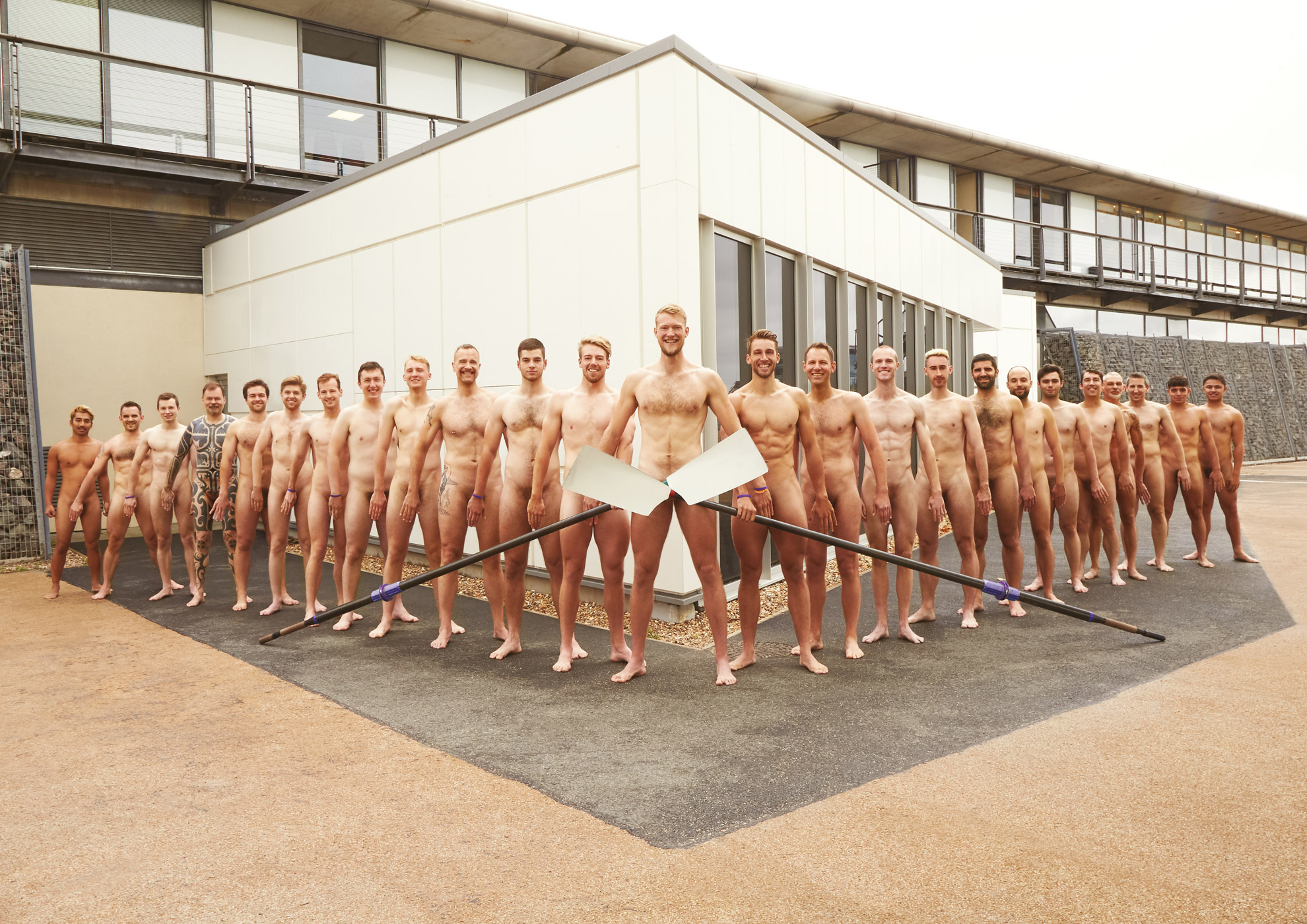
A Story by Chat GPT4
In 2040, the Olympic Committee was facing a crisis. Viewership had plummeted, and public interest had waned. To revive the spirit and essence of the Games, historians proposed looking to the past—to the very beginnings of the Olympics in ancient Greece.
It was there, in Olympia in 776 BCE, that the first recorded Olympic Games took place, with athletes competing in the nude. Nudity was an homage to the gods and a celebration of the human body, in all its natural glory and power.
After months of debates, the Committee made a bold decision: the upcoming Summer Games would offer events where athletes could, if they chose, compete as the ancient Olympians did—in the nude.
This choice was made optional to respect the diverse cultures and beliefs of athletes around the world. The aim was not to sexualize the competitors, but rather to return to the roots of the Games and celebrate the human form and spirit.
As news broke, the world buzzed with anticipation and controversy. There were those who praised the decision, viewing it as a refreshing celebration of body positivity and a return to the true spirit of the games. Detractors, on the other hand, called it a gimmick, a desperate bid for attention.
When the Games began, the world watched with bated breath. Surprisingly, many athletes embraced the tradition. There was something primal, liberating, and powerful about competing in their most natural state, devoid of the trappings of modern sportswear.
In the racing events, runners sprinted, their muscles rippling, embodying the very essence of human motion. In gymnastics, the pure artistry and athleticism of the human body was on full display, unencumbered by clothing. Wrestlers grappled, echoing the traditions of millennia past.
Yet, it wasn’t just about the spectacle of the human body. The return of nudity to the Olympic Games shifted the narrative. Commentary focused less on what athletes were (or were not) wearing, and more on their stories, their dedication, and their talents.
There was a renewed sense of camaraderie among athletes. Competing in the nude was a great equalizer; there were no logos, no brand endorsements—just pure skill. Many spoke of feeling more connected to their fellow Olympians, sharing this uniquely vulnerable and powerful experience.
The world watched, fascinated, as records were broken and new champions crowned. As the Games concluded, it was clear that the decision to reintroduce nudity, even if only as an option, had shifted the global conversation about body positivity, authenticity, and the essence of the Olympics.
Not all subsequent Olympic Games continued the tradition, but the impact was undeniable. The 2040 Olympics served as a reminder of the raw power, beauty, and spirit of humanity. It was a celebration of our shared history, and a nod to the ancient athletes who, beneath the sun of Olympia, competed with passion, dignity, and pride.
Our posts on social media are censored to conform to the rules set by Instagram. Back in the very early days of our project, you only ever got to see bottoms and a little bit of bush, which was enough to get us into trouble on Instagram, but that’s another story.
When we started making documentary films of our shoots, we quickly realised it was impossible to hide everything, and gradually we stopped trying. Since then we have featured the penis increasingly prominently in our content. It has become one of the cornerstones of our commitment to authenticity, vulnerability and changing how we look at men. It has undoubtedly been challenging for a lot of guys in the project, but it has also become one of our most important learning experiences.
The penis has been symbolically connected to notions of masculinity, dominance, and aggression throughout history. At Barefoot Man, we want to challenge those associations by inviting men to present their bodies in a way that is respectful, authentic and with the consent of everyone involved. That has meant that while we do show penises we do not show erections.
As soon as a man is erect, it can appear as an assertion of power or a threat of violence to come. Images can be just as aggressive, unwelcome or manipulative as reality. Unsolicited dick pics are generally unwelcome, and most of the erections we see online probably belong to people we will never meet, and who may not find us sexually exciting in real life.
We want to show men’s bodies in a way that they are rarely seen: on the terms of the viewer, not the subject, and without creating an illusion of sexual availability that may only exacerbate a misplaced sense of sexual entitlement.
History in a Flash
The idea of the penis as a symbol of aggression is definitely not new. In various cultures throughout history, phallic symbols have been used to represent power. For instance, in ancient Egypt, obelisks were erected as monuments to the god Atum, symbolizing the penis and its creative force. Similarly, in ancient Greece, the phallus was a symbol of fertility and strength, often used in religious and cultural rituals.
In some cultures, the act of exposing one’s penis was seen as an act of dominance and aggression. In ancient Rome, the practice of “infamia” involved the public exposure of one’s genitals as a form of humiliation and aggression against slaves and prisoners. In Native American cultures, the “scalping” of enemies was sometimes associated with genital mutilation as a display of dominance.
Since the invention of photography and the growth of popular entertainment, we have got very used to looking at women’s bodies whenever we want – on a stage, on a page, on a screen. Men’s bodies, and particularly their penises, were for a long time less easy to see as a matter of choice, at least outside the ghetto of gay erotica.
The Dick Today
In the digital age, it is definitely easier to see a lot of penises, but it makes it more important than ever that we create rules around how men show them and how everyone sees them. There are plenty of men out there arguing that masculinity and male aggression are tied to sexual virility.
These connections are being used to perpetuate harmful stereotypes. The term “toxic masculinity” is shorthand for a whole range of cultural behaviours and the harm caused by rigid gender roles and expectations placed on men. It is not our favourite term as it conflates men with masculinity and life is not that simple. Not all men are Andrew Tate, but too many men buy into being dominant, aggressive, and sexually assertive. Barefoot Man is about creating alternative masculinities so that men can dissociate themselves from this toxicity.
Consent and respect are paramount when it comes to sexual interactions. The idea of using one’s penis as a weapon of aggression is not only morally wrong but also illegal. Consent and communication are essential for healthy sexual relationships.
Rather than seeing the penis as a weapon of aggression, we need to address the underlying power dynamics and social issues that contribute to aggressive behaviours. These issues can include gender inequality, misogyny, and societal pressures. At a time when we seem to be polarised in many ways, it has never been more important to emphasise the importance of consent, respect, and education in fostering healthy sexual relationships and challenging harmful stereotypes.
Let’s rehabilitate the penis. Let’s put it at the heart of promoting healthier masculinities for young and old alike. By considering and offering the penis as a peace symbol, men can move away from simplistic notions of masculinity that perpetuate aggression. We believe it will help everyone to embrace a more nuanced understanding of human sexuality and gender dynamics.
#MentalHealthAwarenessWeek2021 has been about the importance of nature to our wellbeing. It was a very appropriate choice: many of us have been locked up, away from nature and away from a whole range of activities that are a natural part of our wellbeing.
Some men spend their whole lives that way, locked behind doors and barriers that keep the world out and their thoughts in. There is a great film from The Representation Project called The Mask You Live In (http://therepresentationproject.org/film/the-mask-you-live-in-film/see-the-film/). The film explores this problem in a vivid, accessible and compelling way. Do check it out!
The Worldwide Roar supports men to remove the barriers of masculinity for their own wellbeing, and to become allies in the wellbeing of others.
These images are from our biggest ever shoot, which we held not long after Manifesto had gone to press. It featured our first transman, more men of colour, our first man with tattoos, our first men over forty, and an almost even balance between men who identified as straight and men who identified as LGBT. There were senior athletes from Olympic level rowing, alongside LGBT members of an inclusive rowing team, some of our original heroes from the boat club days and representatives from a dozen other sports, including pole dancing!
All these men stripped naked and threw purple powder over each other. the idea came from calendar star Amir. We were sitting in a brainstorming meeting one day, discussing plans for our 2020 cover, and Amir mentioned seeing people in his friend’s Hindi community using pigment during Holi, the festival of colours. Holi is the most vibrant of all Hindu festivals, and a celebration of the triumph of good over evil. We loved it immediately.
As ever, purple was our colour of choice – and we think we’re in good company! In Alice Walker’s seminal novel, The Color Purple, one character says, “I think it pisses God off if you walk by the color purple in a field somewhere and don’t notice it.” In the same way, we want men to be mindful of their relationship with their masculinity, and we want everyone to stop and feel the joy that this project and its message bring to both our participants and our supporters.
If these blogs speak to you, we’d love you to join the Roar – as a participant, a sponsor, a donor, a subscriber or an advocate on social media. Whatever you feel you can contribute to the Roar, this is an opportunity for all of us to help each other.
The Worldwide Roar is here for you. Take a fresh look at life, and take a fresh look at men!
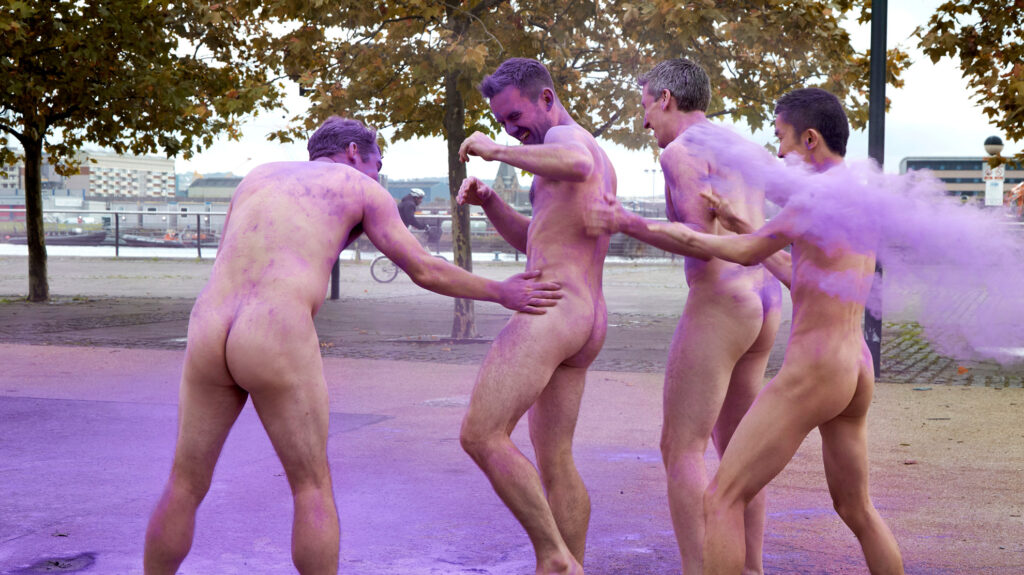
https://www.mentalhealth.org.uk/campaigns/mental-health-awareness-week
https://theskillcollective.com/blog/5-mens-health-resources
https://www.healthdirect.gov.au/mens-mental-health
Today we bring you the last of the five principles for healthier masculinity and better male mental health that we explored through art in our book, Manifesto.
It is perhaps the most important of all, and it’s all about help: understanding there is no shame in needing help, recognising when you might need some, reaching out to find the help you need, and then being open to receiving it.
We know it’s not always easy! By the time we did this shoot, we had been the Warwick Rowers for ten years. It became more and more of a challenge as interest in our project kept on growing. By 2019, we finally understood that our little boathouse could no longer contain us. There was more to be done than we could manage, and more to be said than one small sports club could hope to know, let alone say. We knew that we could no longer do this project justice by ourselves.
We thought about how much all of us on each side of the camera had learned over the years – about ourselves, about the world around us, and about the difference that any of us can make if we try.
The biggest thing we learned was that everyone can make a difference if they try, and trying feels good.
We thought about the many other sportsmen who could benefit from going on this extraordinary journey that we had taken over many years – one that we believe has made us healthier.
We recognised that our message could grow stronger with the help of men who had been on different journeys to our own. We knew that our voice would have more power as one among many voices – the voices of men from different sports, cultures, sexualities and birth genders. The voice of BIPOC men, of LGBTQI men, of men who had grown up in worlds far away from our own.
We sent up a flare to ask for help, because we know how much this project has meant to people all over the world already, and how much it could mean to so many more.
That help has already begun to arrive, from national and international sporting bodies, broadcast sports media, community sports organisations and from the many individual sportsmen who are joining us, naked.
Now we ask for your help, too – as a participant, a sponsor, a donor, a subscriber or an advocate on social media. Whatever you feel you can contribute to the Roar, this is an opportunity for all of us to help each other.
The Worldwide Roar is here for you. Take a fresh look at men!

https://www.mentalhealth.org.uk/campaigns/mental-health-awareness-week
https://theskillcollective.com/blog/5-mens-health-resources
https://www.healthdirect.gov.au/mens-mental-health
We have always presented male nudity as a gesture of respect by men living in a culture that has for too long privileged the heterosexual male gaze. During 2017, we witnessed a widespread conversation about the disempowerment and objectification of women. There was a recognition of the need for more equitable rules around male and female power, and particularly male and female bodies.
Yves Klein was a French painter who, like Jackson Pollock, experimented with alternative ways to apply paint. In his late 1950s series, Anthropometry, he used naked female models as “living brushes”. We decided to revisit Klein’s work using our bodies as men. We wanted to echo Klein’s emphasis on the act of creation, but also to celebrate the breakthroughs taking place to challenge patriarchal assumptions.
To do this, we brought an enormous raw canvas measuring nine metres by four metres to a remote location in Southern Spain, along with a lot of paint. We created a performance in which we put the paint on each other, and we put our bodies on the canvas, because we believe that change happens faster when we work together and commit our whole selves to reaching our goals.
Working as a team, body and soul. That is what we do in our sport, and it is what we do as men who get naked to support change.
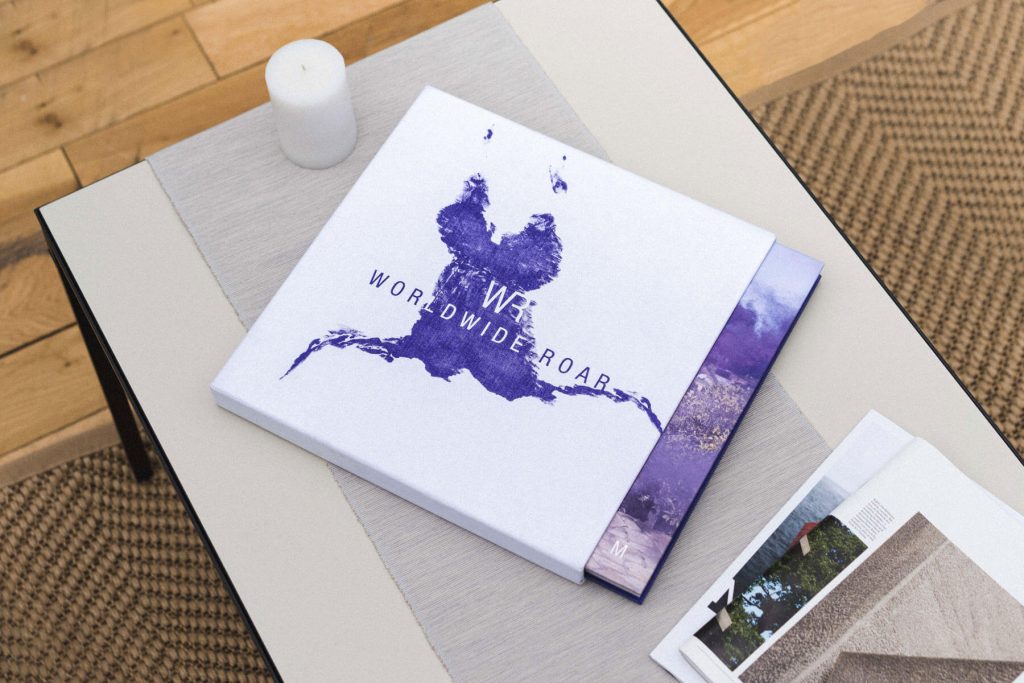
https://www.mentalhealth.org.uk/campaigns/mental-health-awareness-week
https://theskillcollective.com/blog/5-mens-health-resources
https://www.healthdirect.gov.au/mens-mental-health
It is always good to talk. Communication is at the heart of our own mental health as well as our relationships with others, but it is not always easy to share how we feel or say what we mean.
Graffiti can be a manifestation of this; it is often a way for people without a voice to say things that cannot be said, anonymously, outside the rules.
Men’s voices might be the loudest in the room, and the ones that get listened to by other, similar men, but that doesn’t mean that men are good communicators. We struggle with talking about emotions, we find it hard to be clear and direct (though that doesn’t mean we don’t shouty and aggressive!), we aren’t always good at listening, we dodge difficult questions and we struggle to separate communication from competition (ever noticed how all-male communication is often about status and power?).
So after the free form paint spraying of Jackson Pollock and the handprints of intimacy, in 2016 we brought the brush back, because words are useful. With words at this shoot on a nude beach in Spain, we were able to communicate our love for our cause and our commitment to using words as tools for sharing by putting graffiti on each other’s bodies.
We chose to do it in bright sunshine on a public beach, because there is no shame in love, and no shame in sharing how you feel.

https://www.mentalhealth.org.uk/campaigns/mental-health-awareness-week
https://theskillcollective.com/blog/5-mens-health-resources
https://www.healthdirect.gov.au/mens-mental-health
You need to load content from reCAPTCHA to submit the form. Please note that doing so will share data with third-party providers.
More InformationYou need to load content from Turnstile to submit the form. Please note that doing so will share data with third-party providers.
More InformationYou need to load content from reCAPTCHA to submit the form. Please note that doing so will share data with third-party providers.
More Information